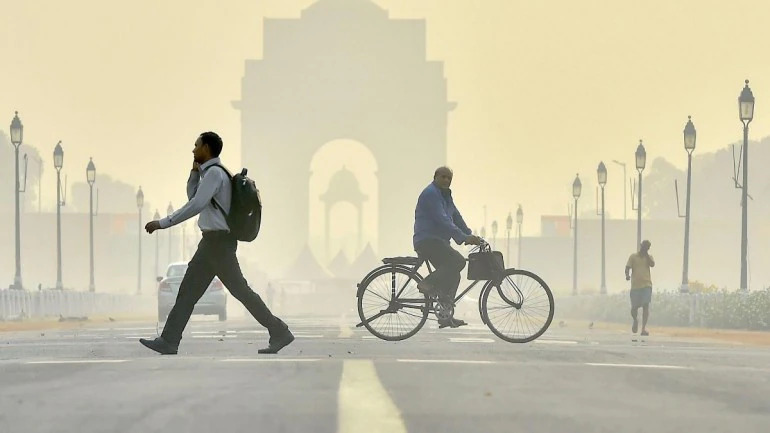
Delhi, suburbs still in the grip of toxic air; relief likely only on Sunday

The national capital is still in the grip of post-Diwali pollution as the city’s Air Quality Index (AQI) remains above 500 for the second consecutive day, indicating the air is still filled with extremely hazardous fumes which is not fit to breathe.
The System of Air Quality and Weather Forecasting and Research (SAFAR) statistics show that Delhi’s air quality may not improve before November 7, which means Delhiites will have to live with highly toxic air for a day more.
Delhi’s AQI at 6 am on Saturday (November 6) was 533, while the situation was equally grim in Noida (478), Gurugram (456) and Ghaziabad (486). An AQI between zero and 50 is considered good, 51 and 100 satisfactory, 101 and 200 moderate, 201 and 300 poor, 301 and 400 very poor, and 401 and 500 severe.
On Friday morning, a thick blanket of smoke enveloped the national capital and suburban areas even as fumes from stubble burning in surrounding areas kept the air unbreathable. Fog conditions started intensifying in Delhi-NCR on Friday morning (November 5), lowering visibility in several parts of the city to 200 metres. People complained of itchy eyes and difficulty in breathing.
The alarming situation now is largely attributed to bursting of crackers on Diwali day (November 4) though stubble burning in nearby farms had started the deterioration of air quality a few days back.
Also read: Diwali and stubble burning leave north Indians out of breath
An AQI of above 400 means the city falls in the “severe” category, which can cause damage to respiratory tract and adversely affect even healthy individuals. Those with lung disorders or heart conditions are at a greater risk.
On Saturday morning, particulate matter (PM) 2.5 concentration stood at 457, the highest since 2018. The WHO’s prescribed safe limit is 25. Exposure to fine particles can cause short-term health effects such as eye, nose, throat and lung irritation, coughing, sneezing, runny nose and shortness of breath.
Sunil Dahiya of the Centre for Research on Energy and Clean Air (CREA) told Reuters that the firecracker ban failed in Delhi, which has caused pollution levels to rise exponentially in the last few days.
Top 10 cities cities with the poorest air quality as of 8am on November 6, 2021:
1. Delhi (AQI: 533, severe)
2. Ghaziabad, Uttar Pradesh (AQI: 486, severe)
3. Noida, Uttar Pradesh (AQI: 478, severe)
4. Hapur, Uttar Pradesh (AQI: 468, severe)
5. Baghpat, Uttar Pradesh (AQI: 464, severe)
6. Bulandshahr, Uttar Pradesh (AQI: 463, severe)
7. Greater Noida, Uttar Pradesh (AQI: 461, severe)
8. Gurugram, Haryana (AQI: 456, severe)
9. Meerut, Uttar Pradesh (AQI: 455, severe)
10. Ballabhgarh, Haryana (AQI: 448, severe)

